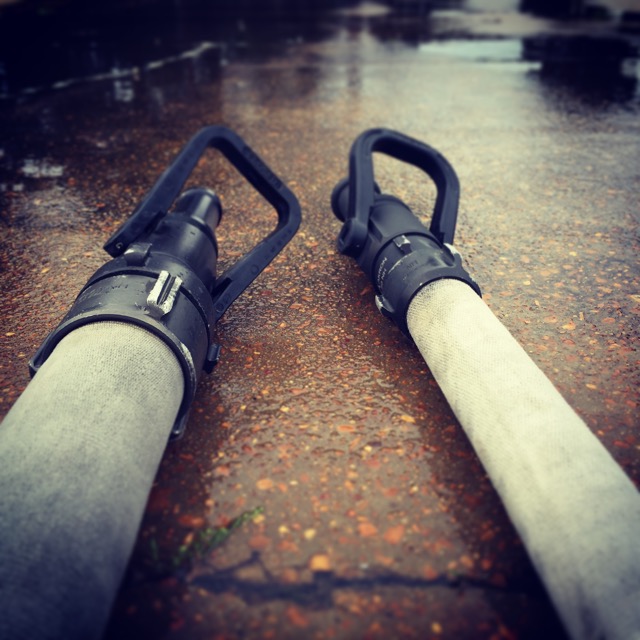 Is it just me or has our culture in the fire service moved from a group of men that strived to be the best at what they do to a group of men who strive to document what they could do? In our world of litigation and insurance rating classifications we put pen to paper to document everything we do just to "benefit" from the "training hours". We have seen a shift off center for years that has slowly eroded our fundamental training process. That process is called drilling. What used to be called the drill field is now being called the "training facility" or what used to be simply called the "dressing drill" is now an elaborate check box skill with grading criteria called "Donning and Doffing PPE".
I talk with training officers and instructors often and there always seems to be a common theme, "What are some new training ideas we can use?". We constantly feel like we have to come up with something new and improved to create a positive learning environment. The true fact is that practicing the fundamentals on a regular basis will get you much further than anything else. It's great if we can all perform technical rapid intervention skills like bail-outs and lift-outs but if we struggle getting an attack line in place within a reasonable amount of time than we are really putting the cart before the horse.
Is it just me or has our culture in the fire service moved from a group of men that strived to be the best at what they do to a group of men who strive to document what they could do? In our world of litigation and insurance rating classifications we put pen to paper to document everything we do just to "benefit" from the "training hours". We have seen a shift off center for years that has slowly eroded our fundamental training process. That process is called drilling. What used to be called the drill field is now being called the "training facility" or what used to be simply called the "dressing drill" is now an elaborate check box skill with grading criteria called "Donning and Doffing PPE".
I talk with training officers and instructors often and there always seems to be a common theme, "What are some new training ideas we can use?". We constantly feel like we have to come up with something new and improved to create a positive learning environment. The true fact is that practicing the fundamentals on a regular basis will get you much further than anything else. It's great if we can all perform technical rapid intervention skills like bail-outs and lift-outs but if we struggle getting an attack line in place within a reasonable amount of time than we are really putting the cart before the horse.
 I was very fortunate I had the opportunity to play collegiate sports and had the ability to see the inner workings of high caliber athletic programs. The teams you see performing at the highest levels practice their fundamentals everyday. Without a strong foundation of bread and butter skills you are really not giving yourself a fighting chance when it comes to the audibles you need to call on the fire ground. Andy Fredericks has a great quote that I believe really hits home on this topic which is "If you put the fire out in the first place you don't have to jump out of the windows".
I was very fortunate I had the opportunity to play collegiate sports and had the ability to see the inner workings of high caliber athletic programs. The teams you see performing at the highest levels practice their fundamentals everyday. Without a strong foundation of bread and butter skills you are really not giving yourself a fighting chance when it comes to the audibles you need to call on the fire ground. Andy Fredericks has a great quote that I believe really hits home on this topic which is "If you put the fire out in the first place you don't have to jump out of the windows".
If you are struggling finding things to train on or using the excuse that you do not have a dedicated training facility just get up and go flow some water. Pull your attack lines and talk about how you can deploy them, feel the nozzle reaction of a properly pressurized nozzle and what an under pressurized or kinked line will feel like. Practice carrying and raising your ladders because the next time you use them may be to rescue a civilian or even one of your own. The bottom line is PRACTICE! It may not be the sexiest training you get to be a part of but when the time comes it will be the most valuable training you were a part of.

